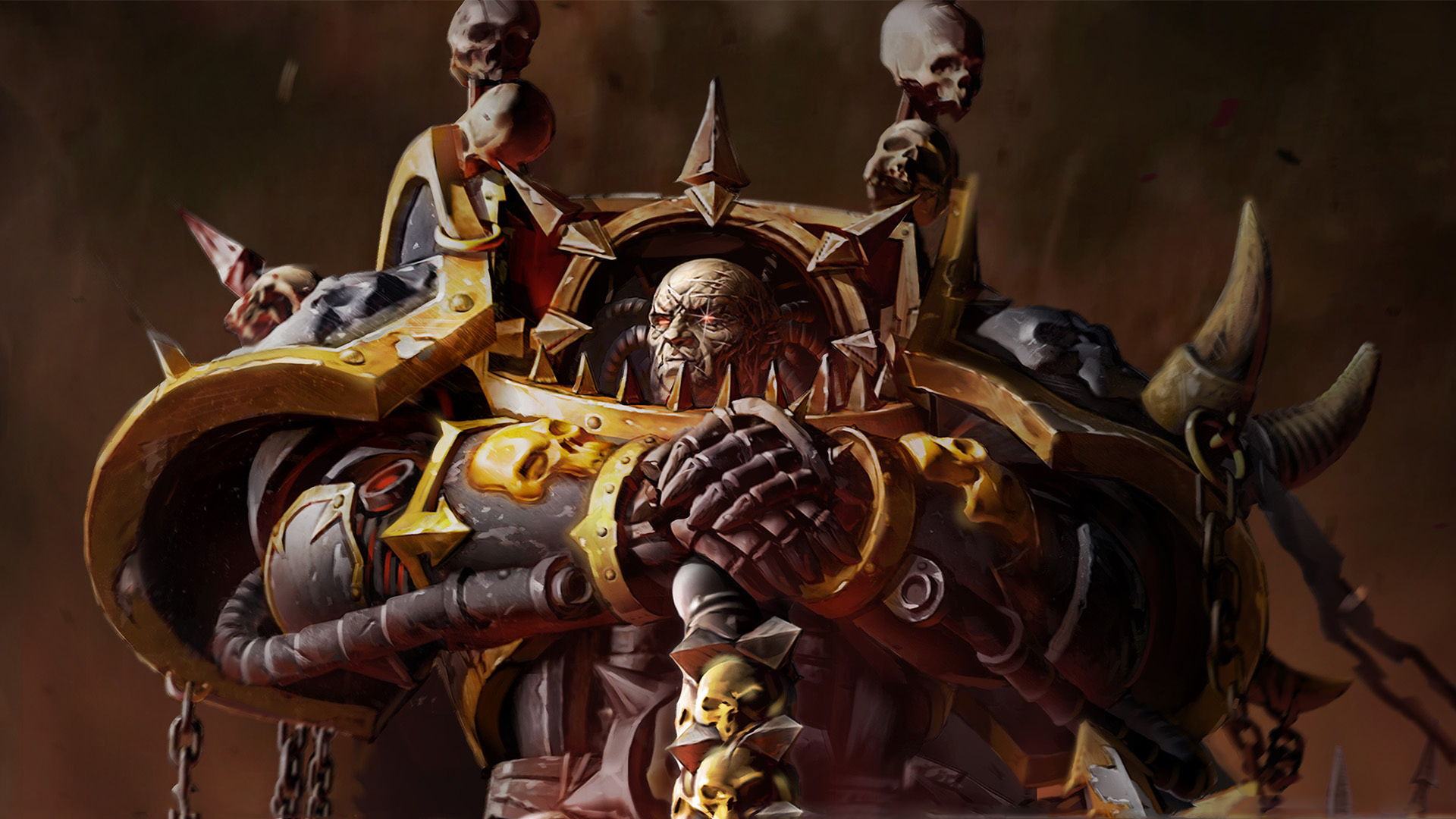

Controlling hordes of disease-ridden Poxwalkers appealed to my love of necromancers and zombie armies (one of my D&D characters actually tried to siege a city with anthax-carrier zombies), and all the rust and buboes and weird chitinous growths seemed refreshingly organic and interesting compared to the smooth metal armor plates of the Space Marines and Eldar. Once I understood Nurgle, my whole perspective on his armies changed. In a dark future where there’s only war, Nurgle is a bright ray of sunshine-to him, the perpetual war engulfing the galaxy isn’t a horrifying struggle for survival, it’s a non-stop party. While other gods have titles like “The Hunter of Souls” and “Changer of Ways,” Nurgle is just Papa Nurgle, passing out his love to all his horribly misshapen followers. All the flavor text surrounding his armies seemed to be variations of “bubotic, vomitous, oozing hordes of plague-spewing abominations.” Who would think it’d be fun to play as a bunch of misshapen, pus-covered mutants?īut what I didn’t count on was Nurgle himself-despite being the god of death and plagues, Nurgle is oddly the most lovable, humorous, and weirdly benevolent of the Chaos Gods. Like I said, I used to hate him most of all-he was just gross. Nurgle is the disgusting, morbidly obese Chaos god of disease, death, and decay in the Warhammer 40K universe. To be honest, the rampant tribalism within Warhammer is part of what convinced me to give it another chance: everyone seemed to have so much fun swearing their undying loyalty to one faction and pledging eternal hatred for all the others that it made me wonder what made them so passionate about the game. Games Workshop has more models on shelves for some factions than others (keep cranking out those Space Marines, GW!), but they generally have enough variety to flesh out whatever army you want to build, whether it’s Imperium, alien, or Chaos (Nurgle’s Death Guard, the army I play, is a Chaos force). These guys defend the Imperium against alien races that run the gamut from murderous hiveminds like the Tyranids to sophisticated elf-like civilizations like the Aeldari, as well as the forces of Chaos, which consist of demonic legions that follow the commands of their patron Chaos God-Tzeentch, Khorne, Nurgle or Slaanesh. They are led by their god-like Emperor, who has been preserved in a mechanical shrine called The Golden Throne, and have legions of hulking, genetically engineered guys in armor (Space Marines) and armies of normal-sized people armed with tanks and rifles (Imperial Guard). If you want to get a handle on the lore, I wrote this article on the magic of Warhammer (which gives some insight into the universe), but the basic idea is this:Ĥ0,000 years into the future, humanity has become a fragile, galaxy-spanning theocracy called the Imperium that loves Gothic aesthetics and incredible violence. Right now, Warhammer is in its 8 th edition. Like D&D, you need specific hardback rulebooks to play. You use six-sided dice to determine whether your little soldiers hit or miss and a tape measure to measure distances. If you’re more of a lurker around the edges of the 40K world (like I was), intimidated by the dense lore and the esoteric world of hobby-craft, here are the basics: Warhammer is a tabletop war game where you buy your figures, glue ‘em together, paint them, then field them to fight battles. If you’re an experienced Warhammer player, you can skip this part-you’ve already finished your triple-major degree, and are probably qualified to teach a course on the basics.

This is the story of how I learned to stop worrying and love Warhammer.

Pictured: a man who knows what he’s doing.Īnyway.


 0 kommentar(er)
0 kommentar(er)
